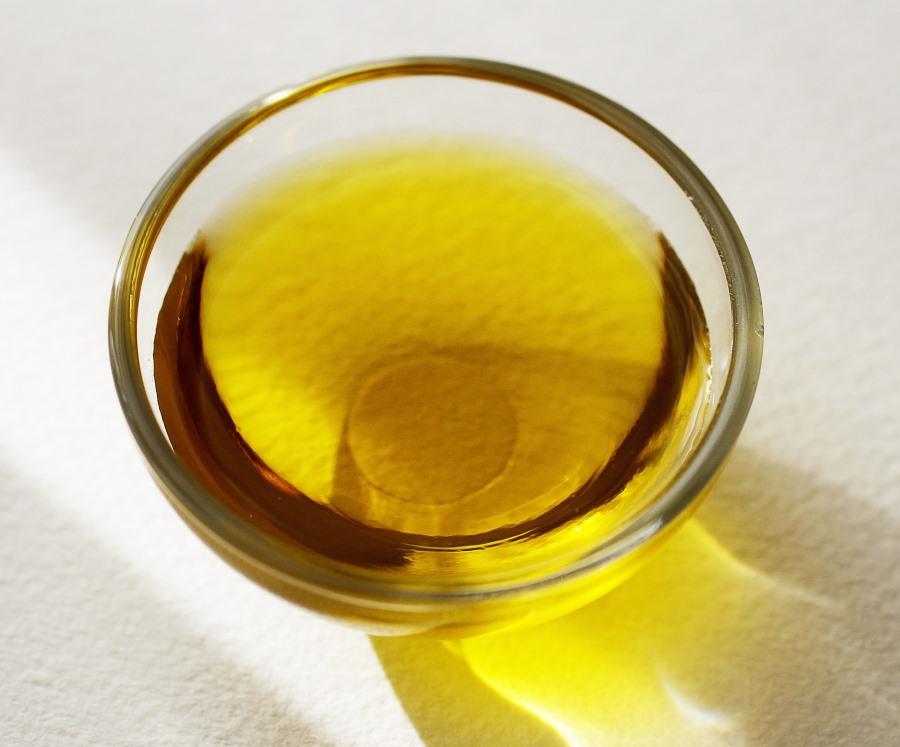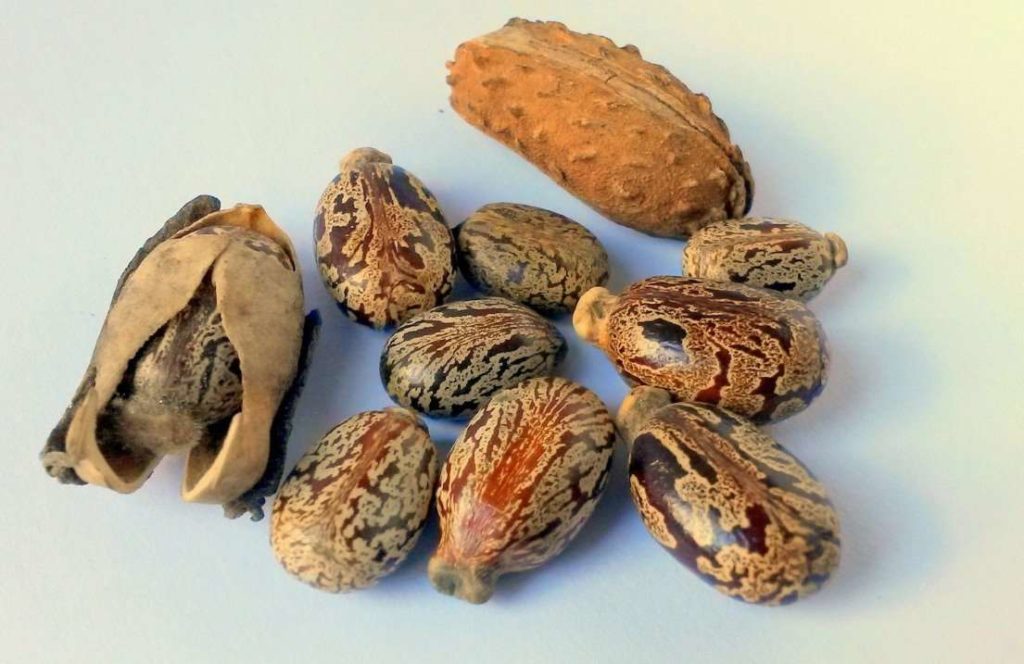Castor Oil Manufacturing Project Report, Business Plan
Introduction
Hello friends, today we are here with a new topic called “Castor Oil Manufacturing Project Report”. The castor oil plant, Ricinus communis, belongs spurge family, Euphorbiaceae. Castor is native to Eastern Africa, the south-eastern Mediterranean Basin, and India, but is extensive all-over tropical regions. Castor seed is the basis of castor oil, which has a variety of applications. The seeds comprise between 40% -60% oil high in triglycerides, particularly in ricinolein. The Indian variety of castor seeds includes 48% oil content in which only 42% is extracted. The seed includes ricin, a toxin, which is also present in minor quantities throughout the plant and hence castor oil is not edible.
A guide to Castor Oil Manufacturing Project Report and Business Plan

Properties of Castor Oil
Castor oil is a colorless to very pale-yellow liquid having a distinct taste and odor. Castor oil is a multi-purpose oil that people have been using for many years. It is obtained by an Manufacturing process using the seeds of the Ricinus communis plant. These seeds, famous as castor beans, include a toxic enzyme popular as Ricin. Castor oil and its products are extensively used in the manufacturing of cold resistant plastics, paints and lubricating materials, pharma products, hydraulic and brake liquids, dyes, toilet soaps, coatings agents, nylon, polishing products, waxes, and perfumes.
Castor oil is one of the most essential plant oils, extracted through pressing the seeds of the Ricinus communis (castor oil plant). It is rich in monounsaturated, ricinoleic, and an 18-carbon fatty acid. Because of the exclusive chemical formation and rich characteristics, castor oil and its derivatives are extensively used in industries manufacturing cosmetics, plastics and rubber, inks and adhesives, and textile chemicals lubricants. Also finds its use in industries like electronics and telecommunications, pharmaceuticals, etc. After plant oils, castor oil stands next amongst the highly required oil.

Castor Oil uses and its applications
Castor oil has several industrial applications as it is extensively used in the manufacturing of paint, soaps, cosmetics, adhesives, varnishes, lubricants, etc. Being a moderate laxative and smoothing compound, it is extensively used in several therapeutic preparations. It is used even for manufacturing various castor oil derivatives that are next considered to be valuable industrial substances having countless applications.
Market trends of Castor Oil production in India
The oilseeds processing industry is booming with the upsurge in the production of oilseeds under the national oil seeds mission, growth in consumption of vegetable oils with industrial development, and mounting GDP of the nation. Concerning castor oil, the demand from the domestic market is growing day by day with the growth of newer products and collective exports of castor oil to various countries across the globe.
Market potential of Castor Oil Making Business in India
India is capable of exporting 91-93% amongst world exports of castor oil. For example, if the world export of castor oil in 2016-17 is 5.25 lakh tons, then India alone contributed about 4.85 lakh tons. The expected domestic intake by end of 2017 is about 7.00 Lakh tons and exports account to be 5.25 Lakh tons. It is a rich source of a monounsaturated, ricinoleic, and 18-C fatty acid. Owing to its ideal chemical structure and rich characteristics, castor oil, and its by-products have been used in many industries such as food, cosmetics, lubricants, agriculture, paints, electronics and telecommunications, pharmaceuticals, plastics, inks and adhesives, perfumeries, rubber, and textile chemicals. After plant oils; castor oil is estimated as the demanding oil. However, growing research and applications of bio-fuels particularly biodiesel and biopolymer across the world are focusing on castor oil production and could be a key aspect contributing to the world economy.
Business plan for starting Castor Oil Production Plant
To start with any kind of business unit you need to craft an excellent business plan which includes
- List of licenses, registration
- Implementation schedule of project
- Raw materials required
- Machinery required
- Production process
- Estimated cost and
- Profit analysis
Statutory requirements for establishing Castor Oil Production Unit
- MSME registration
- GST registration
- ROC
- Registration of firm
- Shop Act License
- FSSAI License
- IEC Code
- Export License
- Fire and Safety
- ESI
- PF
- No Objection Certificate from pollution board
- Trade license from local municipal authority
Raw material required to start Castor Oil Production Unit
In case if you miss this: Ideas To Make Money In India.

Gujarat is the highest castor seeds cultivating state in India that accounts for 90% of total indigenous farming. The best season for castor seed cultivation from December to March and arrival is expected up to May. The processing is a continuous one and seen up to the month of May or till mid-June, i.e., approximately 260 days. Based on a unit capacity of 55 tons per day, the processor demands about 14,300 MT of castor seeds per year which is easily available in Gujarat and other regions such as Andhra Pradesh, Rajasthan, and Telangana.
List of machinery required to establish Castor Oil production unit in India
- Seed Crushing Expellers Sets
- Support, Plant for and Fabrication
- Castor Oil Pipelines and Fittings
- Boiler, Pipelines, Chimney etc
- DG Set of 400 KVA
- Weigh Bridge 60 Tons
- Laboratory Equipments
- Fire Fighting Equipments
- Workshop Equip./Essential Spares
- Furniture/Fixtures/Computers etc.
- Erection/Commissioning etc.
Implementation schedule for Castor Oil Production Unit
- Purchase of Land – months
- Completion of Building – 3 months
- Ordering of Machinery – 4 months
- Delivery of Machinery – 2 months
- Term/Wkg Loan Sanction – 3 months
- Installation of Machinery – 4 months
- Commissioning of Plant – 1 month
- RM/Inputs Procurement – 1 month
- Manpower Appointments – 1 month
- Commercial Production – 1 month
Manpower requirement for Castor Oil Manufacturing Unit
- Technical Staff 5
- Adm. Staff 4
- Marketing Staff 4
- Labour 20
- Total 33
Manufacturing process of Castor Oil in Production Unit
Step 1: Castor oil seed comprises about 30%–50% oil (m/m) based on the variety. Castor oil is extracted from castor beans by steps like solvent Manufacturing, mechanical pressing, or by a combined action of pressing and Manufacturing. After harvesting, the seeds are kept for drying so that the seed hull tends to split open, giving out the seed.
Step 2: The Manufacturing process starts after the removal of the hull from the seeds. This can be completed mechanically using castor bean dehuller or by manual process. If your budget is not a problem, the machine used for the de-hulling process is suggested.
Step 3: After dehulling, the seeds are sent for cleaning to remove the foreign materials like stems, sticks, leaves, sand, or dirt particles. These materials are commonly eliminated using a series of revolving screens or reels.
Step 4: Magnets used above the conveyer belts will separate iron. The seeds will now be heated to make seeds harder that facilitate Manufacturing. In this process, the seeds are placed in a steam-jacketed press to eliminate moisture, and this hardening process will further make the Manufacturing step easy.
Step 5: The cooked seeds will be dried before the Manufacturing step starts. A continuous screw or hydraulic press is implemented to crush the castor oil seeds which removes the oil. The Manufacturing method is called prepressing.
Step 6: Pre-pressing mainly involves the use of a screw press known as the oil expeller. The oil expeller is helpful to extract oil as it has a high-pressure continuous screw press.
You may also check this: Vermicompost Project Report.
Castor Oil Manufacturing Project Report/Economics for establishing a Castor Oil Project Unit in India
Castor Oil Manufacturing Project Report – Fixed Capital
- Land and site development: Own
- Building and civil works: Rs. 5,00,000
- Plant and machinery: Rs. 16,00,000
- Misc. Fixed Assets: Rs. 2,30,000
- Preliminary and pre-operative expenses: Rs. 2,20,000
- Contingencies and escalation @ 5%: Rs. 1,18,000
- Working capital: Rs. 1,15,000
- Total: Rs. 27,79,000
Castor Oil Manufacturing Project Report – Working Capital
- Raw Materials: Rs. 1,00,000
- Power & Utility: Rs. 10,000
- Salaries: Rs. 74,000
- Packaging of oil: Rs. 1,22,000
- Receivables: Rs. 1,49,000
- Total: Rs. 4,58,000
Castor Oil Manufacturing Project Report- Total cost of Castor Oil Making Business
Fixed Capital + Working capital = Rs. 27,79,000 + Rs. 4,58,000 = Rs. 32,37,000.
Income per annum in Castor Oil Making Business
Total income/ annum: Rs. 36,25,000.
Castor Oil Manufacturing Project Report – Profit in Castor Oil Production Unit
Profit = Total cost – Total Income = Rs. 36,25,000 – Rs. 32,37,000 = Rs. 3,88,000.
- Pet-Tech Startups: Innovations for Animal Lovers
- Tech Repair Services: Meeting the Demand for Gadget Maintenance
- Maximizing Rewards: Smart Credit Card Habits for Cashback and Points
- Ultimate Guide to Making Money from Goat Milk Business
- How to Start an Agricultural Value Added Product Business
- Value-Added Business Ideas for Greenhouse: The Best Ways to Make Profits with Greenhouse Farming
- How to Make Profits with Organic Country Chicken: Best Strategies for Beginners
- 10 Value-added Business Ideas for Millets: Low-investment and Highly Profitable
- Why Cleaning Service Business Becoming More Profitable in Metro Cities in India
- 10 Best Businesses to Start in Ayodhya for Profits
- Top Drone Business Ideas in India: Unlocking Aerial Innovation & Opportunities
- Top 10 Service Businesses You Can Start with No Money
- Ultimate Guide to Starting a Home-Based Advertising Agency Business
- Starting a Nail Salon Near Your Location: Check List, Business Plan, Licensing, and Opening Instructions
- Construction Company Name Ideas: Guide to Create New Construction Company Names
- 8 Best Small Businesses to Start in Hyderabad: Low-Cost and Profitable
- 10 Best Small Businesses to Start in Massachusetts: Low-Cost and Profitable
- 10 Best Small Businesses to Start in Maryland: Low-Investment and Profitable
- 10 Best Small Businesses to Start in Delaware: Low-Investment and Profitable
- 10 Best Small Businesses to Start in Connecticut: Low-Investment and Profitable
- Top 10 Best Online Pet Business Ideas: Exploring Cats to Dogs
- 10 Best Small Businesses to Start in Colorado: Low-Investment and Profitable
- Top 10 Profitable Small Business Ideas in California: Low-Investment Tips
- From Little Rock to Fayetteville: Top 10 Profitable Small Business Ideas in Arkansas
Caster oil process plant required.
Thanks for sharing the best information. I am really enjoying reading your well written articles.